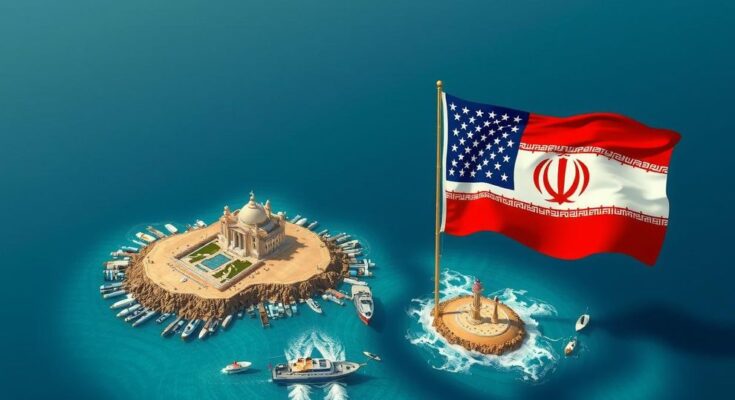The article discusses the ongoing territorial dispute over three islands in the Strait of Hormuz between Iran and the U.A.E. It explores the historical context, the strategic importance of these islands in global oil markets, and the broader geopolitical implications of this conflict, which may escalate as both nations pursue their claims.
The territorial dispute over three small islands—Abu Musa and the Greater and Lesser Tunbs—between Iran and the United Arab Emirates (U.A.E.) has persisted for decades, symbolizing deeper geopolitical tensions in the Persian Gulf. The strategic location of these islands at the entry point of the Strait of Hormuz, a vital waterway for global oil shipments, enhances their significance. Both nations assert historical rights to the islands, and their control is not merely about sovereignty but also about access to maritime resources and economic influence in the region.
The increasing militarization of the region has drawn the attention of major international powers. As Iran seeks to solidify its claim over the islands, the U.A.E. is pursuing diplomatic avenues and international support to bolster its position. Recent developments suggest that the rivalry may escalate, impacting oil markets and regional stability, both crucial for global economies and security.
Additionally, the complex history and the vibrant trade routes that pass through this region contribute to the relevance of these islands in contemporary geopolitics. This dispute encapsulates broader themes of nationalism, resource competition, and the quest for strategic dominance, revealing how small territories can have outsized implications in international relations.
In light of the ongoing tensions and shifts in alliances, the question remains: can peaceful resolution be achieved, or will these islands continue to be a point of conflict between Iran and the U.A.E.?
The dispute over the three islands has its roots in historical claims and national pride. After the British withdrawal from the region in 1971, Iran took control of the islands, leading to the U.A.E. asserting its claims over them. The islands are not only significant for their geographical position; their potential hydrocarbon resources and strategic maritime pathways underscore their importance in the global energy market. The region’s history, punctuated by periods of colonial intervention and nationalist movements, has firmly intertwined the fate of these islands with the broader geopolitical landscape of the Middle East.
In conclusion, the continued dispute over the three islands between Iran and the U.A.E. reflects the complexity of historical grievances intertwined with modern geopolitical concerns. The strategic importance of the Strait of Hormuz paired with the potential economic repercussions amplifies the significance of this territorial conflict. As both nations navigate their respective ambitions and international relations, the small archipelago remains a focal point of debate that may influence the stability and interactions within the Persian Gulf region.
Original Source: www.rferl.org




